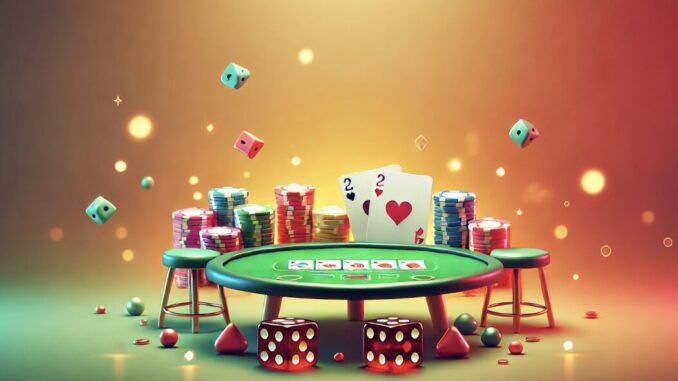
Why Poker Gets Your Heart Racing
Imagine the intense thrill of deciding whether to go all in at the poker table, your heart pounding as your opponents study you for any hint of weakness. This exhilarating world of poker can change fortunes with just a flip of the cards. No matter if you’re a seasoned pro or just starting out, this guide will help you up your poker game, one hand at a time. We’ll reveal the secrets to masterful bluffing, uncover how to decipher those all-important poker tells, and explore why your position is a game-changer. Get ready to outsmart the competition!
Bluffing: It’s Not Lying, It’s Strategy!
The Psychology Behind a Good Bluff
Bluffing is at the very heart of poker. It’s the art of deception, making your opponents think you hold a stronger hand than you really do. A recent Harvard University study shows the rise of online gambling has led to riskier bluffing techniques, thanks to the anonymity of digital platforms. To master this skill, keep these tips in mind:
- Pick your spots: Bluff sparingly and only when it’s believable.
- Study your opponents: Pay close attention to their betting patterns and reactions.
- Control that poker face: Maintain a consistent demeanor whether bluffing or not.
- Use position power: Bluffing from late position is often more effective.
Remember that epic “Bluff of the Century” by Andy Beal against top pros in 2006? Holding just a pair of threes, he somehow convinced them he had a full house, scooping the pot. Bluffing isn’t just about winning a hand; it’s about shaking your opponents’ confidence game-long.
Have you ever pulled off a massive bluff yourself? Or maybe you were on the losing end? Share those hair-raising stories below – it might inspire some new bluffing maneuvers!
Poker Tells: Reading Faces Like a Book
Decoding Common Poker Tells
Poker tells are subtle physical or verbal cues that can reveal clues about someone’s hand strength. Learning to decipher these tells gives you a massive edge, allowing you to make smarter decisions and catch your opponents off guard. Daniel Lowery’s impressive win of two WSOP rings at Hard Rock Tulsa serves as a great example of capitalizing on tells during the WSOP Circuit event.
Common tells to watch for include:
- Nervous habits like fidgeting, chip shuffling, or excessive swallowing
- Changes in breathing patterns, like shallow or rapid breaths
- Shifty eye contact or intense chip stares
- Verbal clues – sudden chattiness or out-of-character silence
- Delayed reactions before betting, or acting overly fast
Keep in mind that experienced players might use false tells to mislead. So watch for patterns over time rather than depending on isolated instances. Picks ups on tells has decided major tournaments – just look at how Chris Moneymaker called out Sammy Farha’s bluff at the 2003 WSOP Main Event.
As you play, work on controlling your own tells too. But most of all, be an eagle-eyed observer of others. What sort of tells have you noticed at the tables? Spotting them could be the difference between winning and losing, so share your observations below!
Why Your Seat at the Poker Table Matters
The Power of Position: Early, Middle, and Late Positions
Here’s why position is so powerful in poker: it determines when you act in relation to the dealer button. So players in late position, acting last, have a huge advantage over those in early position. The Harvard study on online gambling’s rise found late position players win more hands and make smarter decisions overall.
Position power comes down to:
- Information Edge: Late position reveals more about opponents’ hand strength.
- Premium Bluffing: It’s easier to pull off bluffs when acting last.
- Pot Control: You control bet sizing better from late position.
- Steal Chances: More opportunities to steal blinds and chip up.
For instance, say you’re dealt A♠K♣ in early position. You might default to just calling or raising without knowing opponents’ actions yet. But what if you had those same hole cards in late position after several folds? You could re-raise or even go all-in much more aggressively against the remaining field.
To test your position IQ, try this quick quiz:
- True or False: The button (last to act) has the best position.
- In a 9-handed game, which seat is considered the “cutoff” position?
- Why is acting from early position generally tougher?
(Answers: 1. True, 2. The seat right of the button, 3. You have the least info about others’ actions)
For a complete poker reference guide, check out this poker cheat sheet.
Your Poker Journey: It’s Just the Beginning
So, as we’ve seen, getting really good at poker means nailing a few key skills: bluffing like a pro, reading people’s tells, and knowing all about position. Sharpen these strategies and you’ll soon be a force to be reckoned with at any poker table.
But remember, mastering poker is an ongoing journey. Give these tactics a go in your next game, but be flexible and develop your own unique style too. The best players blend textbook knowledge with raw instinct.
We’d love to hear about your personal poker path. What approaches have worked well? Any big “aha” moments that leveled up your game? Share your stories, tips and questions below – your insights could inspire fellow players to take things up a notch.


Leave a Reply